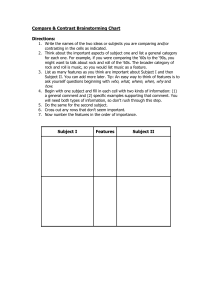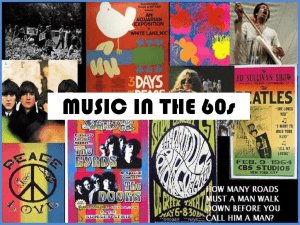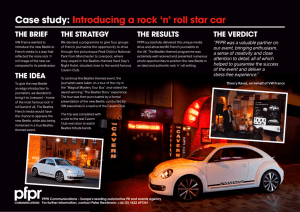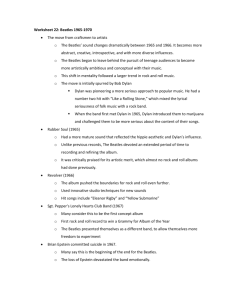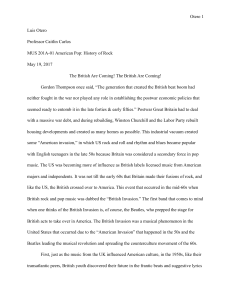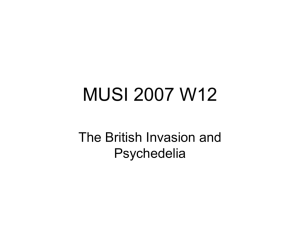Teacher Notes - The Beatles Story
advertisement
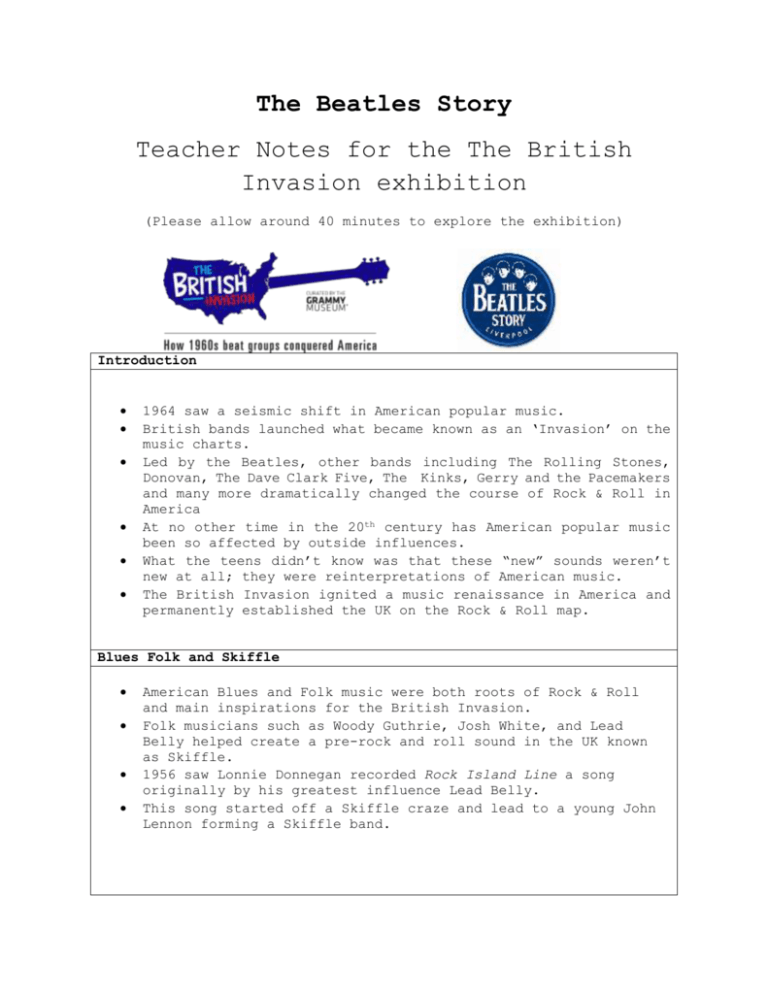
The Beatles Story Teacher Notes for the The British Invasion exhibition (Please allow around 40 minutes to explore the exhibition) Introduction 1964 saw a seismic shift in American popular music. British bands launched what became known as an ‘Invasion’ on the music charts. Led by the Beatles, other bands including The Rolling Stones, Donovan, The Dave Clark Five, The Kinks, Gerry and the Pacemakers and many more dramatically changed the course of Rock & Roll in America At no other time in the 20th century has American popular music been so affected by outside influences. What the teens didn’t know was that these “new” sounds weren’t new at all; they were reinterpretations of American music. The British Invasion ignited a music renaissance in America and permanently established the UK on the Rock & Roll map. Blues Folk and Skiffle American Blues and Folk music were both roots of Rock & Roll and main inspirations for the British Invasion. Folk musicians such as Woody Guthrie, Josh White, and Lead Belly helped create a pre-rock and roll sound in the UK known as Skiffle. 1956 saw Lonnie Donnegan recorded Rock Island Line a song originally by his greatest influence Lead Belly. This song started off a Skiffle craze and lead to a young John Lennon forming a Skiffle band. America Before the Beatles In the early 1960s American Rock & Roll was stuck in neutral as many of the most important pioneers were missing from the scene. Elvis was in the army, Chuck Berry was in jail, Ritchie Valens Buddy Holly and Eddie Cochran had died. Little Richard found religion, Jerry Lee Lewis had married his cousin, Johnny Cash was focusing on Country music,Carl Perkins was recovering from a car accident and Gene Vincent had been badly injured in a motorcycle mishap. Rhythm & Blues, Rock & Roll and Soul The In the late ‘50s early ‘60s the American music contained numerous artistic styles – Rhythm & Blues, Rock & Roll and Soul. Rhythm & Blues, a precursor to Rock & Roll came of age after World War Two. Artists like Ray Charles and James Brown were R&B stylists who helped the pre-dominantly African-American sound reach a wider audience. Soul music evolved from R&B it had a smoother, more pop friendly groove. The Motown sound came from Detroit and featured artists such as Smokey Robinson, Stevie Wonder and the Supremes – all regualar acts in the music charts. In California, the Beach Boys created a surf sound to represent sunny L.A. American Invasion of Great Britain Before British bands invaded the U.S, American acts had invaded Great Britain. It started with American Jazz and Blues musicians, in the post war years, touring the UK and bringing with them raw, rough cut sounds. It was not until Rock & Roll exploded in America that a torrent of sounds and styles hit Britain. 1955 movie Blackboard Jungle featured Rock Around the Clock by Bill Haley and the Comets, both were hugely popular. Elvis hit the scene with Heartbreak Hotel and acts such as Little Richard, Eddie Cochran, Gene Vincent, Chuck Berry and Buddy Holly, all R&R pioneers, elevated the popularity of the music and inspired countless British musicians. Meet the Beatles / Their First Visit / The Ed Sullivan Show The Beatles arrived in New York on Friday 7th February 1964. They were escorted into the Pan American Airlines building for their press conference featuring over 200 sceptical reporters, whilst outside 4000 fans waited to greet them. Hoping for a warm reception, what they received was a sign of things to come. On Sunday 9th February the band appeared on the Ed Sullivan show and broke broadcasting records as 73 million Americans tuned in. Having seen the hysteria surrounding the boy’s arrival firsthand in Heathrow some months earlier, Ed Sullivan saw their potential and had booked them for three shows. The first visit lasted only two weeks but it was enough to ignite Beatlemania; during this trip they went to three cities, played three concerts and held dozens of interviews. I Want to Hold Your Hand was entrenched in the number one chart position. The British Invasion….and the Blues Once the Beatles had found success, it paved the way for many acts to follow suit. Solo artists, duos and bands from across the UK flooded the American pop charts. Part of the American fascination was cultural; teens loved the accents, fashions and new hairstyles. Musically, although the roots were in America, British Rock sounds became increasingly original. In the 60’s middle class households teenagers were allowed to have separate bedrooms, which allowed them greater privacy than in previous generations. This space became private domains, decorated with photos of British Invasion artists. Photographs and record collections competed for space with school books, scrap books and trinkets; while private telephones were an added luxury. Whilst many groups followed the rock and pop route some chose to follow the Bluesmen. The Rolling Stones took their name from a Muddy Waters song; the Animals went to the top of the charts with House of the Rising Sun, an old folk-blues standard. Bands such as Cream, Savoy Brown and Led Zeppelin continued the Blues exploration until a new genre, Blues Rock emerged in the late 60’s. American Response The invasion unleashed a create music explosion that saw an increase in guitar sales; fashions changed as long hair became fashionable for men, the British flag became popular, a new music press was born and new bands formed across the country. LA group The Byrds based their early sound on the Beatles. The Beach Boys used Rubber Soul and Revolver as inspiration for Pet Sounds. Jefferson Airplane and The Grateful Dead of San Francisco had early roots in the Invasion. Whilst in Boston, The Standells reflected the rawness of the Rolling Stones; and in Detroit Motown acts started to interpret Beatles songs. The Next Invasion There was no official end date to the British Invasion, however many music historians point to the Beatles final concert in Candlestick Park in Aug ‘66 as the most logical conclusion. The Beatles became a studio based band that broadened rocks creative reach with singles like Strawberry Fields Forever and the album Sgt Pepper’s Lonely Hearts Club Band. There was however a second wave invasion. Cream, Pink Floyd, the Jimi Hendrix Experience, Led Zeppelin, The Small Faces, The Moody Blues, Procol Harlem alongside the Rolling Stones, The Who and the Kinks ensured the second was just as memorable. End of exhibition

